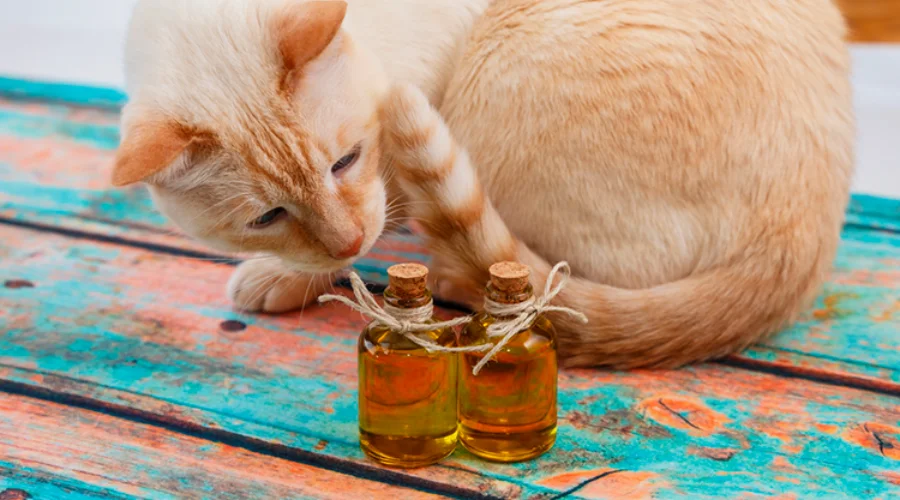Cats are cherished members of our families, and their well-being is paramount. As pet owners, we often explore various ways to enhance their environment, including the use of essential oils. However, it’s crucial to understand the potential risks and benefits associated with using essential oils around cats. In this comprehensive guide, we will delve into the safety of cats from essential oils, the benefits of essential oils, toxic oils to avoid, exposure through diffusers, cat safe essential oils, and best practices for ensuring your feline friend’s safety.
Are Essential Oils Safe for Cats?
Using essential oils around cats is a topic that warrants careful consideration. While some essential oils can offer benefits for both cats and their owners, there are inherent risks that pet owners must be aware of. Here’s what you need to know:
Benefits of using cat safe essential oils:
Before we explore the potential risks, it’s essential to acknowledge that there can be benefits to using cat safe essential oils. These include:
1. Aromatherapy:
Certain essential oils, when used cautiously and appropriately, can promote relaxation and reduce stress for both cats and humans.
2. Repelling Insects:
Some cat safe essential oils can help deter pests like fleas and ticks, providing a natural alternative to chemical treatments.
3. Supporting Health:
A few essential oils, under veterinary guidance, may offer support for specific health concerns in cats.
Toxic essential oils to cats:
While there are benefits to using essential oils, there are also toxic oils that should be strictly avoided. Toxic essential oils for cats include, but are not limited to:
- Tea Tree Oil (Melaleuca): Highly toxic to cats and can cause severe reactions, including skin irritation, tremors, and even organ failure.
- Eucalyptus Oil: Can lead to symptoms such as drooling, vomiting, and lethargy if ingested or inhaled in concentrated forms.
- Citrus Oils (Lemon, Orange, Lime, Grapefruit): These oils contain compounds that can be harmful to cats and may cause digestive upset.
- Cinnamon Oil: Known to cause irritation and potential toxicity, especially if ingested.
Some cat safe essential oils:
While it’s crucial to be cautious, there are cat safe essential oils that can be used thoughtfully to enhance your cat’s environment. Here are some examples:
- Basil: The aromatic allure of basil can infuse your home with a delightful fragrance, and you can do so with peace of mind knowing it’s safe for your cat.
- Easter Lily Cactus: The Easter Lily Cactus brings a touch of desert charm to your decor while remaining entirely non-toxic to your feline friend.
- Fennel: Fennel’s distinctive aroma can be a pleasant addition to your living space, and it won’t raise any concerns about essential oil toxicity for your cat.
- Hibiscus: The vibrant and exotic appeal of hibiscus can grace your home, and it’s a delightful choice for cat-friendly scents.
- Jasmine: Known for its sweet and captivating fragrance, jasmine is both an aromatic and safe choice when considering cat safe essential oils.
- Lemon Balm: The invigorating scent of lemon balm can uplift your spirits and your home’s ambiance without compromising your cat’s safety.
- Rose: The timeless and elegant fragrance of roses can be enjoyed in your surroundings, and it’s a cat-friendly option that won’t cause any essential oil toxicity concerns.
- Sage: Sage’s earthy and herbal aroma can create a soothing atmosphere, and it’s a choice that aligns perfectly with your cat’s well-being.
- Thyme: Thyme’s aromatic charm can enhance your living space while ensuring a cat-safe environment.
Can cats be exposed to essential oils through diffusers?
One common method of using essential oils is through diffusers. While diffusers can be a safe way to enjoy aromatherapy for humans, they require caution when used in homes with cats.
- Dilution Matters: If you choose to diffuse essential oils, ensure they are highly diluted, and always use cat-safe oils. Even cat-safe oils should be diluted more than you might for human use.
- Proper Ventilation: Ensure the room is well-ventilated, and there’s a clear path for your cat to exit if they choose to do so.
- Monitoring Your Cat: Pay close attention to your cat’s behavior when using a diffuser. If you notice any signs of distress, remove your cat from the area immediately.
How should I use essential oils around my cat?
When using cat safe essential oils, it’s vital to follow these best practices to ensure their safety:
- Consult with a Veterinarian: Before introducing any essential oils into your cat’s environment or using them for specific purposes, consult with a veterinarian who is knowledgeable about essential oil safety for pets.
- Dilution is Key: If you plan to use cat safe essential oils around your cat, always dilute them significantly more than you would for humans. A general rule of thumb is to use a 0.1% to 0.5% dilution for cats.
- Observation is Crucial: Keep a close eye on your cat when introducing essential oils. Observe their behavior for any signs of discomfort, irritation, or distress.
- Limited Exposure: Limit the duration and frequency of essential oil exposure for your cat. Infrequent and short periods of exposure are less likely to pose risks.
- Safe Diffusing: If you choose to use a diffuser, ensure it is placed in a room where your cat can come and go freely. Never confine your cat in a space with a running diffuser.
- Store Essential Oils Safely: Keep essential oils securely stored and out of reach of your cat. Cats are known to be curious, and accidental ingestion of undiluted oils can be harmful.
- Seek Professional Guidance: If you are uncertain about using essential oils around your cat or have specific health concerns, seek guidance from a veterinarian experienced in holistic or alternative treatments.
What Are the Signs of Toxic Scent Exposure when it comes to cats?
Signs of toxic scent exposure in cats can vary depending on the type and concentration of the scent, as well as the individual cat’s sensitivity. If you suspect your cat has been exposed to toxic scents or essential oils, it’s essential to be vigilant and watch for any unusual behaviors or symptoms. Here are some common signs of toxic scent exposure in cats:
- Respiratory Distress: Cats exposed to toxic scents may exhibit signs of respiratory distress, such as coughing, sneezing, wheezing, or labored breathing. This is particularly common when strong scents or irritants are inhaled.
- Drooling: Excessive drooling or hypersalivation can be a sign of discomfort or irritation caused by exposure to toxic scents. Cats may lick their lips excessively or have wet fur around their mouth.
- Vomiting: Ingesting or inhaling toxic scents can lead to vomiting in cats. This is their body’s way of trying to expel the irritant or toxin.
- Gastrointestinal Upset: Cats may experience diarrhea or other gastrointestinal issues as a result of exposure to toxic scents or substances.
- Lethargy: Cats exposed to toxic scents may become lethargic or unusually inactive. They may lack their usual energy and interest in their surroundings.
- Agitation or Restlessness: Conversely, some cats may become agitated, restless, or anxious when exposed to toxic scents. They may pace, meow excessively, or exhibit signs of discomfort.
- Skin Irritation: Skin contact with toxic scents or essential oils can lead to irritation, redness, or rash. Cats may scratch or groom excessively in response to skin discomfort.
- Eye Irritation: Cats may develop eye irritation, redness, tearing, or squinting if they come into contact with toxic scents or substances.
- Changes in Behavior: Cats may exhibit changes in behavior, such as hiding, seeking solitude, or avoiding areas with the scent. They may become more withdrawn or fearful.
- Neurological Signs: In severe cases of exposure to highly toxic substances, cats may display neurological signs, such as tremors, seizures, or loss of coordination.
- Difficulty Swallowing: If a cat ingests toxic scents or substances, it may have difficulty swallowing, exhibit discomfort when eating or drinking, or refuse to eat altogether.
Conclusion
Pretty Litter’s commitment to cat safety extends to their consideration of essential oils. They emphasize the importance of using caution and consulting with a veterinarian when incorporating essential oils into a cat’s environment. While certain oils can offer potential benefits, it’s crucial to be aware of the risks and to prioritize the well-being of our feline companions. Pretty Litter’s guidance underscores the need for responsible usage of essential oils around cats, ensuring a harmonious and safe living environment for both pets and their owners. For more information about cat safety, visit Savewithnerds.
FAQs
















